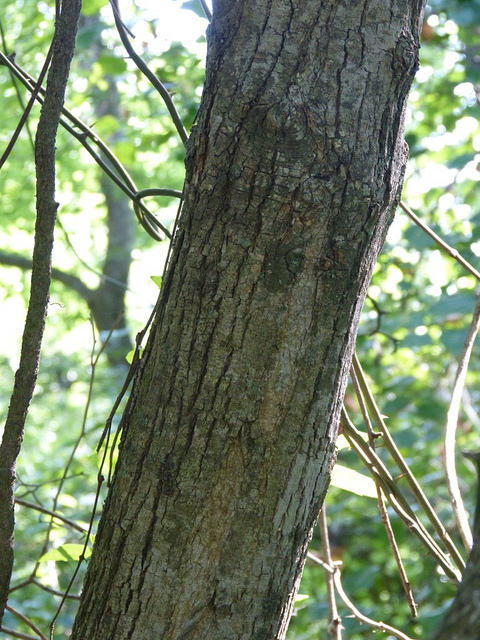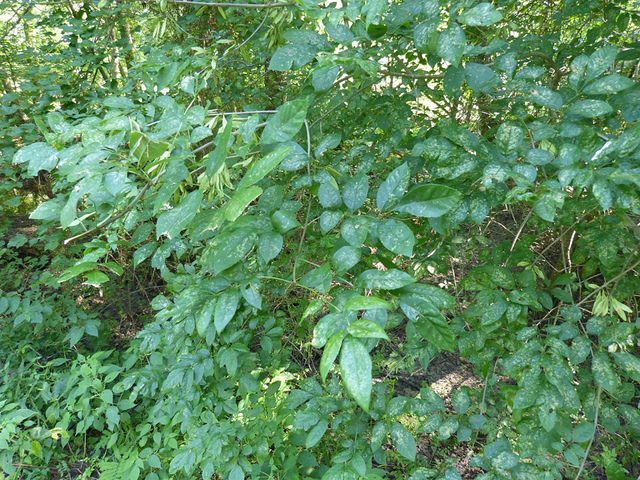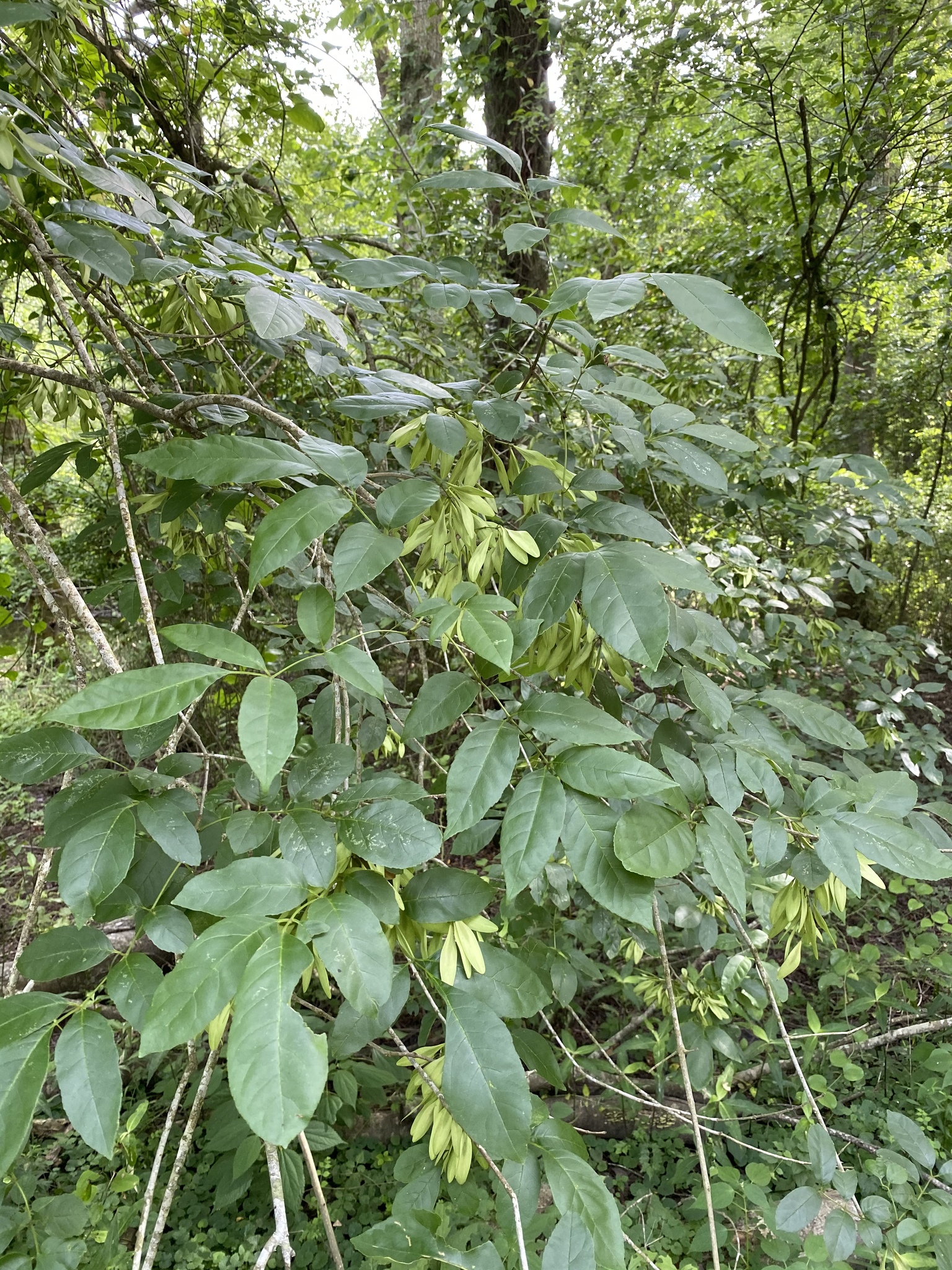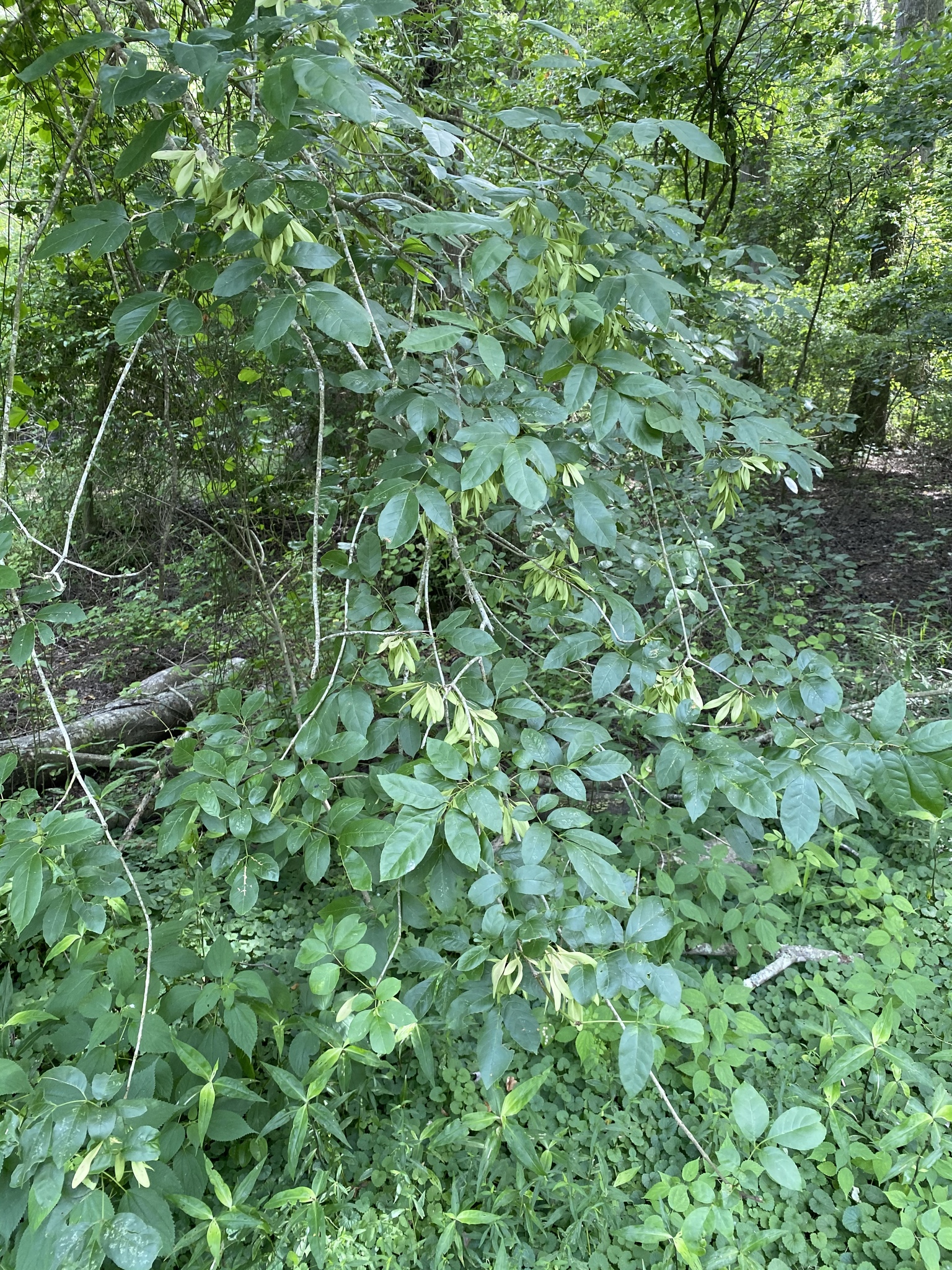Map Snapshot



15 Records
Seasonality Snapshot
Source: Wikipedia
| Fraxinus caroliniana | |
|---|---|

| |
| Scientific classification | |
| Kingdom: | Plantae |
| Clade: | Tracheophytes |
| Clade: | Angiosperms |
| Clade: | Eudicots |
| Clade: | Asterids |
| Order: | Lamiales |
| Family: | Oleaceae |
| Genus: | Fraxinus |
| Section: | Fraxinus sect. Melioides |
| Species: | F. caroliniana
|
| Binomial name | |
| Fraxinus caroliniana | |
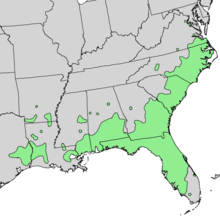
| |
| Natural range of Fraxinus caroliniana in the United States | |
Fraxinus caroliniana, the pop ash, Florida ash, swamp ash, Carolina ash, or water ash, is a species of ash tree native from Cuba through the subtropical Southeastern United States from southern Virginia to Texas. It was originally described by the botanist Philip Miller. It is a small tree about 40 ft. Leaves are compound, opposite, 7–12 in long, leaflets 5–7 in, ovate to oblong, coarsely serrate or entire, 3–6 in long, 2–3 in wide. Fruit is frequently 3-winged (samara) with flat seed portion; seed sometimes a bright violet color. It is the smallest of eastern North American ash species, wood light, soft, weak, 22 lbs./cu.ft. Typical to coastal swamps and subtropical lowlands. Like other species in the section Melioides, Fraxinus caroliniana is dioecious, with male and female flowers produced on separate individuals.[2]
The tree is threatened by the emerald ash borer, an invasive species of beetle.[3]
Climate change and swamp ash
[edit]Flooding
[edit]Along the lower Mississippi River, flooding occurs during winter and spring. The trees are able to withstand the seasonal flooding.[4] However, flooding has intensified due to climate change. The National Oceanic and Atmospheric Administration found the 2019 spring floods along the Mississippi River were among some of the costliest in history.[5] Lee Jones of J. M. Jones Lumber Company says "The river has been up for so long, and for so much, that it's killed a lot of the trees".[4]
Future concerns
[edit]The emerald ash borer is an invasive species from Asia.[4] The beetles damage the trees by boring holes into the wood, damaging the trees' water and nutrient transport system. These beetles have spread to 35 U.S. states and five Canadian provinces.[4][6] The emerald ash borer has not yet reached the lower Mississippi, but Jennifer Koch, a Forest Service biologist, says "it's only a matter of time" before it affects the swamp ash.[4]
Use as a tonewood
[edit]Ash, particularly swamp ash because of its figure, is a choice of material for electric guitar bodies[7] and, less commonly, for acoustic guitar bodies, known for its bright, cutting edge and sustaining quality. Some Fender Stratocasters and Telecasters are made of ash, (such as Bruce Springsteen's Telecaster on the Born to Run album cover), as an alternative to alder.
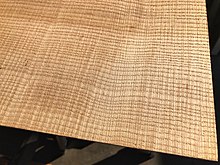
Ash is a Tonewood commonly used in the manufacture of electric guitars.[8] It exhibits a pronounced bright tone with a scooped midrange. It's lightweight, easy to work and sand,[9] accepts glue, stain, paint and finish very well and is inexpensive. All this has made it a favourite of large factories mass-producing instruments. The Fender musical instrument company has been continuously and uninterruptedly using Ash to make electric guitars since 1956.[8] Swamp ash is used a lot in guitar building because of its figure. It is a choice of material for electric guitar bodies[7] and, less commonly, for acoustic guitar bodies, known for its bright, cutting edge and sustaining quality. Some Fender Stratocasters and Telecasters are made of ash, (such as Bruce Springsteen's Telecaster on the Born to Run album cover), as an alternative to alder.
References
[edit]- ^ Westwood, M.; Oldfield, S.; Jerome, D.; Romero-Severson, J. (2017). "Fraxinus caroliniana". IUCN Red List of Threatened Species. 2017: e.T63004A96445289. doi:10.2305/IUCN.UK.2017-2.RLTS.T63004A96445289.en. Retrieved 12 November 2021.
- ^ Wallander, Eva (2008). "Systematics of Fraxinus (Oleaceae) and evolution of dioecy". Plant Systematics and Evolution. 273 (1–2): 25–49. doi:10.1007/s00606-008-0005-3. S2CID 24152294.
- ^ "Fraxinus caroliniana (Carolina Ash, Florida Ash, Pop Ash, Poppy Ash, Swamp Ash, Water Ash) | North Carolina Extension Gardener Plant Toolbox". plants.ces.ncsu.edu. Retrieved 2020-09-28.
- ^ a b c d e Runwal, Priyanka (28 October 2020). "Climate Change Hits Rock and Roll as Prized Guitar Wood Shortage Looms". Scientific American. Retrieved 2020-10-29.
- ^ "2010-2019: A landmark decade of U.S. billion-dollar weather and climate disasters | NOAA Climate.gov". www.climate.gov. Retrieved 2020-10-29.
- ^ "Emerald Ash Borer". www.emeraldashborer.info. Retrieved 2020-10-29.
- ^ a b SWAMP ASH Lumber Guide: 8/4 Lightweight Guitar Wood 2020 15 December 2018 www.commercialforestproducts.com, accessed 27 September 2020
- ^ a b "Ash vs. Alder: What's the Difference?".
- ^ Brij (26 March 2021). "Ash Wood | Its Advantages and Disadvantages - Timber Blogger". Timber Blogger.
External links
[edit] Data related to Fraxinus caroliniana at Wikispecies
Data related to Fraxinus caroliniana at Wikispecies Media related to Fraxinus caroliniana at Wikimedia Commons
Media related to Fraxinus caroliniana at Wikimedia Commons
